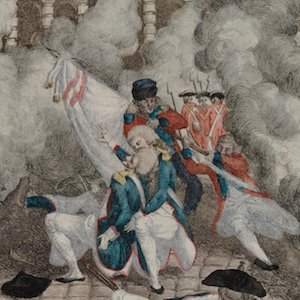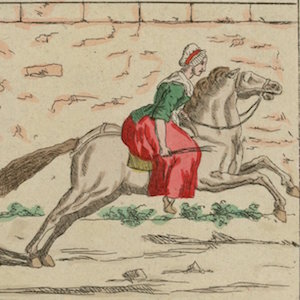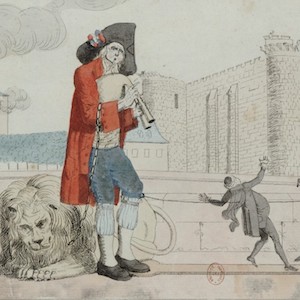Early Modern (1450 CE - 1800 CE)

Massacre of the Prisoners of St. Germain Abbey
In one of the most widely reported incidents of the September massacres, a "jury" of twelve "commissioners" was formed spontaneously in the Saint–Germain Abbey to judge the refractory clergy held there as prisoners.

Foundation of the Republic, August 10, 1792
One of the sharper engagements of 10 August between the revolutionaries and the royal defenders occurred on the palace’s steps. The caption emphasizes the revolutionaries’ point of view.

Siege of the Tuileries
This hand–tinted engraving depicts the storming of the Tuileries Palace by what appear to be small groups of well–organized soldiers of the Marseilles National Guard.

Dona Marina in Florentine Codex
This image was created by an indigenous painter in central Mexico and accompanies a written description of the conquest of Tenochtitlan, penned in both Spanish and Nahuatl in the Florentine Codex. The Florentine Codex is one of the fullest Nahuatl descriptions of the conquest.

Cortés Greets Xicotencatl in Mexican Manuscript
A detail from a larger manuscript page in the Lienzo de Tlaxcala, this scene was created by an indigenous painter in central Mexico. Scenes from the Lienzo de Tlaxcala, now just fragments from a larger set of images, draw upon preconquest painting techniques and conventions.

Triumph of the Parisian Army and the People
Returning home from the October march to Versailles, the women and the guardsmen display the heads of troops who confronted the marchers. Note the use of tree branches, symbolizing support for the revolution here as in other prints.

Vanguard of Women Going to Versailles
Publicity about political machinations, coupled with the continued high price of bread, mobilized market women and encouraged many men to support them. They hoped to fetch the King and his family to end attempts against the Revolution and stabilize prices.

Memorable Day at Versailles, 5 October 1789
This engraving marks success and reconciliation among revolutionaries, as men and women, as well as soldiers and civilians, relax together.

The Day of 21 July 1789
More common than clashes by workers against employers were protests over the rising price of bread. This color drawing depicts events at the City Hall of Strasbourg on 21 July 1789.

Farewell Bastille
This hand–colored engraving equates the taking of the Bastille with the rise of the Third Estate against the clergy and nobility. A commoner in a black hat sporting a tricolor cockade plays the bagpipe triumphantly over the fallen lion of the absolutist monarchy.